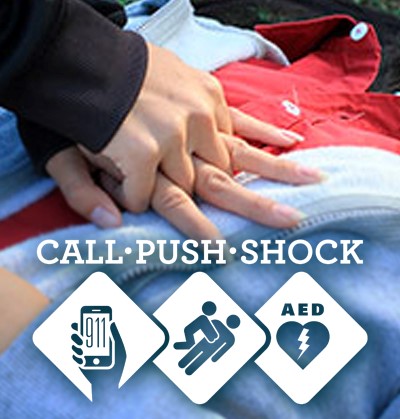Sudden cardiac arrest (SCA) is one of the leading causes of death in the U.S. Most often SCA occurs as the result of ventricular fibrillation (VF), an abrupt irregular rhythm that causes the heart to quiver ineffectively, rather than pumping normally.
In lacrosse and other sports such as baseball and hockey, however, another unpredictable and relatively uncommon source of cardiac death has been recognized — commotio cordis. Commotio cordis can occur when a blunt injury to the chest sends a small electrical charge to the heart. If this occurs within a specific time frame — just milliseconds — relative to the heart's electrical cycle, VF may be induced.
To date, there have been 14 reported cases of commotio cordis in lacrosse, including the Feb. 7 death of a 12-year-old player in upstate New York. Seven victims have survived, however, thanks to prompt response with a defibrillator. Several of the victims were goalies and were wearing chest protectors at the time of their injury. Research has shown that no currently available chest protector can prevent commotio cordis.
While commotio cordis is rare, most young athletes who die of sudden cardiac death have an underlying cardiac abnormality. The most common in the U.S. is hypertrophic cardiomyopathy, a thickening of the heart muscle that can cause fatal irregular heart rhythms. Having relatives with hypertrophic cardiomyopathy increases the risk of that disease. Signs and symptoms may include a heart murmur and chest discomfort during exercise, shortness of breath, lightheadedness or passing out.
Coronary artery disease, blockages in the arteries that deliver blood to the heart, can lead to a heart attack, the most common cause of sudden death over all age groups, though rare in young athletes. The predominant risk factors include a family history of coronary disease, diabetes, high blood pressure, high cholesterol and smoking.
Congenital coronary abnormalities can result in fatal cardiac arrhythmias in young athletes. Other causes of sudden death in athletes include myocarditis, inflammation of the heart muscle from a virus or toxin; right ventricular dysplasia, a genetic abnormality of the right ventricle of the heart more common in those of Italian ancestry; prolonged QT, a genetic abnormality of the cardiac electrical system predisposing individuals to arrhythmia; significant mitral valve prolapse, or excessive floppiness of a heart valve; and asthma. In these disease states, victims may be potentially identified and treated before a devastating event occurs.
When VF occures, CPR can help sustain the vital organs, particularly the brain, for a few minutes, but only the application of a controlled electrical shock from a defibrillator or automatic external defibrillator can restore normal heart rhythm and save the victim. The likelihood of survival drops 10 percent for each minute that passes after a cardiac arrest until the rhythm is restored. The faster victims are defibrillated, the more likely they will survive.
Those who have a family history of one of these disease states or of unexplained sudden death should undergo a cardiac evaluation before participation in athletics. There is much debate regarding the routine screening of all athletes to assess risk of sudden death with electrocardiograms or echocardiograms (heart ultrasounds). While proponents advocate routine screening as a way to identify potential victims, opponents point out that these diseases are quite rare and often do not manifest as abnormalities on these tests. In addition, while these initial tests carry little direct risk to the patient, they may lead to false-positive results; these false positives can unnecessarily preclude participation in athletics or lead to further testing procedures with inherent risks that lead to more danger than from the disease itself.
Organizations such as the Louis J. Acompora Memorial Foundation and US Lacrosse have recognized the risk of sudden death and specifically commotio cordis in the sport of lacrosse. The message is getting out. Research is being conducted to possibly prevent the occurrence of commotio cordis. Educational efforts prepare responders to more quickly recognize this injury and respond in prompt fashion to save victims.
How can you help? Get trained in CPR and the usage of AEDs, and promote the availability of AEDs in your community.
Dr. Mandak is a cardiologist in south-central Pennsylvania with the Fulton County Medical Center and Pinnacle Health Cardiovascular Institute. He has been a member of the US Lacrosse Sport Science and Safety Committee for more than 10 years and serves on the Women's Game Committee.
SOURCE: The Baltimore Sun
